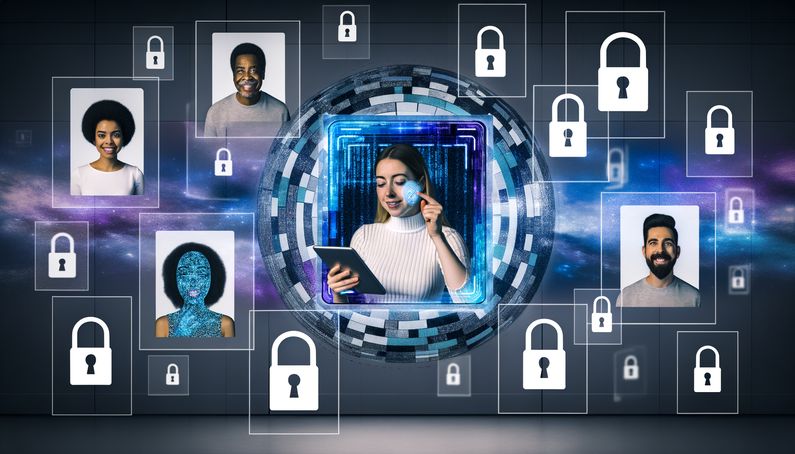
Microsoft's Journey to a Passwordless Future: Enhancing Security and User Experience
Microsoft’s bold move towards a passwordless future marks a significant evolution in digital security. By making all new accounts “passwordless by default,” Microsoft aims to combat the vulnerabilities associated with traditional passwords, such as phishing and brute force attacks (Bleeping Computer). This transition is not just about enhancing security; it’s about simplifying the user experience by adopting passkeys and biometric authentication methods, which are now supported across platforms like Xbox and Microsoft 365 (ZDNet). As the company integrates these changes, it aligns with industry standards through its involvement with the FIDO Alliance, promoting passkeys as a standard sign-in method.
The Shift to Passwordless Accounts
Transition to Passwordless Authentication
Microsoft’s strategic move towards passwordless authentication is a significant step in enhancing digital security. The company has announced that all new Microsoft accounts will be “passwordless by default,” a shift aimed at mitigating the risks associated with traditional passwords, such as phishing, brute force, and credential stuffing attacks (Bleeping Computer). This transition is part of a broader effort to simplify user experience (UX) by rolling out updated sign-in and sign-up flows optimized for passwordless and passkey-first authentication.
Adoption of Passkeys
Passkeys, a more secure alternative to passwords, are central to Microsoft’s passwordless strategy. These are based on biometric authentication methods, such as fingerprints and facial recognition, which provide a higher level of security compared to traditional passwords. Microsoft has been actively promoting the use of passkeys, which are now supported across various platforms, including personal Microsoft accounts and services like Xbox and Microsoft 365 (ZDNet).
Impact on Security
The shift to passwordless accounts is expected to significantly enhance security. Microsoft reports blocking approximately 7,000 password attacks every second, highlighting the vulnerabilities of the traditional password system (Geeky Gadgets). By replacing passwords with passkeys and biometric verification, Microsoft is not only addressing these vulnerabilities but also reimagining digital security. This move is anticipated to reduce the incidence of password-related attacks as users transition to more secure authentication methods.
User Experience and Adoption Challenges
While the transition to passwordless accounts offers numerous security benefits, it is not without challenges. User resistance and the integration of new systems into existing workflows are significant hurdles that Microsoft must overcome. However, the potential benefits for both security and convenience are substantial, making this transition an attractive proposition for users (Geeky Gadgets).
Integration with Industry Standards
Microsoft’s commitment to a passwordless future is further evidenced by its involvement with the FIDO Alliance, an open industry association that promotes passkeys as a standard passwordless sign-in method. The company has also rolled out support for passkey authentication for personal Microsoft accounts, following the introduction of a built-in passkey manager for Windows Hello with the Windows 11 22H2 feature update (Bleeping Computer).
Technological Advancements and Future Outlook
The technological advancements supporting Microsoft’s passwordless initiative include updates to the WebAuthn API, which add support for third-party passkey providers for Windows 11 passwordless authentication. These developments are part of Microsoft’s broader strategy to create a seamless and secure user experience across its platforms (Bleeping Computer).
User Engagement and Feedback
User feedback has been overwhelmingly positive, with many appreciating the ease and speed of passkey sign-ins. According to Microsoft, users signing in with passkeys are three times more successful at accessing their accounts compared to those using passwords, with a success rate of about 98% versus 32% for password users (Microsoft Security Blog). This high success rate is attributed to the elimination of complex characters and one-time codes, making the sign-in process faster and more user-friendly.
Future Developments and Strategic Goals
Looking ahead, Microsoft plans to continue its transition to a passwordless world by introducing significant changes to its sign-in user experience. The company envisions a future where users will only need an email to sign up and sign on for a Microsoft account, with the passkey handling security (Laptop Mag). This vision aligns with the company’s goal of eventually removing password support altogether, as more users enroll in passkeys and the number of password authentications continues to decline.
Conclusion
Microsoft’s shift to passwordless accounts represents a bold and forward-thinking approach to digital security. By adopting passkeys and biometric authentication methods, the company is setting a new standard for secure and user-friendly authentication. While challenges remain, the potential benefits for both security and convenience are too significant to ignore. As Microsoft continues to innovate and refine its passwordless strategy, it is poised to lead the industry towards a more secure digital future.
Final Thoughts
Microsoft’s transition to a passwordless future is a pioneering step in redefining digital security. By replacing passwords with passkeys and biometric verification, the company addresses the vulnerabilities of traditional authentication methods, significantly reducing the risk of password-related attacks (Geeky Gadgets). Despite challenges such as user resistance and integration hurdles, the potential benefits for security and convenience are substantial. As Microsoft continues to innovate, it sets a new standard for secure and user-friendly authentication, leading the industry towards a more secure digital future (Laptop Mag).
References
- Bleeping Computer. (2025). Microsoft makes all new accounts passwordless by default. https://www.bleepingcomputer.com/news/microsoft/microsoft-makes-all-new-accounts-passwordless-by-default/
- ZDNet. (2025). Microsoft’s passwordless future is here for Outlook, Xbox, 365, and more. https://www.zdnet.com/article/microsofts-passwordless-future-is-here-for-outlook-xbox-365-and-more/
- Geeky Gadgets. (2025). Passwordless authentication: Microsoft report. https://www.geeky-gadgets.com/passwordless-authentication-microsoft-report/
- Microsoft Security Blog. (2025). Pushing passkeys forward: Microsoft’s latest updates for simpler, safer sign-ins. https://www.microsoft.com/en-us/security/blog/2025/05/01/pushing-passkeys-forward-microsofts-latest-updates-for-simpler-safer-sign-ins/
- Laptop Mag. (2025). Microsoft moves to a passwordless future for its more than 1 billion users. https://www.laptopmag.com/software/microsoft-moves-passwordless-future-its-more-1-billion-users
Real-World Example: A Day in the Life of a Passwordless User
Imagine Sarah, a busy professional who frequently juggles multiple devices and accounts. With Microsoft’s passwordless system, Sarah no longer worries about remembering complex passwords or dealing with password resets. Instead, she uses her fingerprint to access her Microsoft 365 account on her laptop and facial recognition to log into Xbox. This seamless experience not only saves her time but also provides peace of mind knowing her accounts are secure.
Key Benefits of Going Passwordless
- Enhanced Security: Reduces the risk of phishing and brute force attacks.
- User Convenience: Simplifies the login process with biometrics and passkeys.
- Higher Success Rates: Users experience a 98% success rate with passkeys compared to 32% with passwords.
Challenges and Solutions
- User Resistance: Educating users on the benefits and ease of use can help overcome hesitancy.
- Integration Hurdles: Gradual rollout and support for legacy systems ensure smooth transitions.



